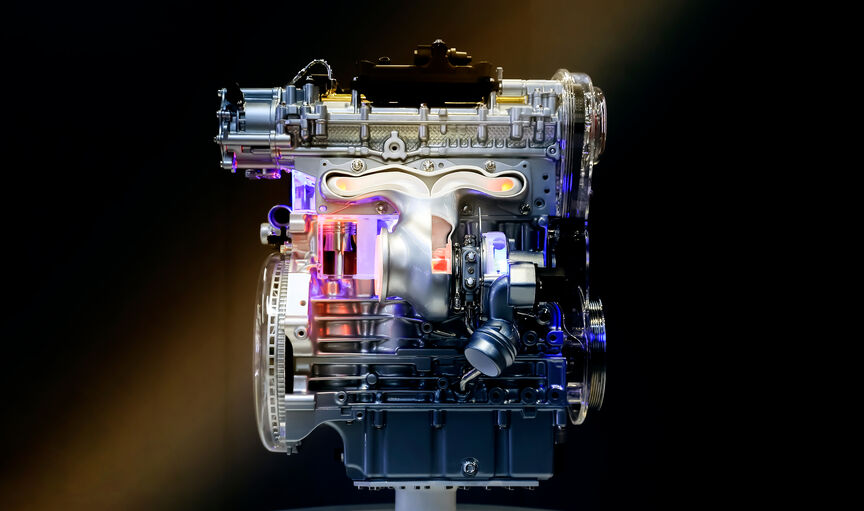What is a hybrid car and how do hybrids work?
More power, better fuel efficiency and lower emissions. Hybrid cars are the sweet spot between petrol or diesel engines and electric power, the stepping-stone between conventional cars and all-electric vehicles.
What is a hybrid car?
A hybrid car combines a traditional petrol or diesel engine with one or more electric motors, which are powered by a battery.
There are multiple types – and different definitions of hybrids – but they can be broadly split into three groups: mild hybrids (MHEV), full hybrids (e:HEV) and plug-in hybrids (PHEV).
We'll explore them in detail later.

What's the difference between a hybrid and an electric vehicle?
While hybrid vehicles offer similar benefits to electric vehicles (EVs), there are some key differences, mainly in how they’re powered.
EVs are fully electric, which means they get their power from the car’s battery alone. Hybrids, on the other hand, use a combination of two power sources – a petrol or diesel engine and electric motors powered by a battery.
EVs don’t have a traditional engine with gear systems. Unlike most hybrids, they also don’t have the ability to charge their own battery. Instead, they’re charged by plugging in to an external source, like a plug socket at home or at a rapid charger found in many car parks.
To own and drive, hybrid and electric cars are similar to each other, as well as conventional automatic cars, but there are a few big differences between hybrids and EVs, below.
Instant power
With an electric car, all the power is available instantly. Hybrid cars, on the other hand, may have lower torque delivery when using engine power.
Tapered sound
Electric cars have no engine, which means no engine noise, except for a manufactured sound to alert pedestrians that a vehicle is near, while hybrids will make some noise when using the petrol engine.
More environmentally friendly
No engine means no tailpipe emissions for electric cars. However, because they have a petrol or diesel engine, hybrid cars do still produce emissions, although these are typically lower than traditional cars.
How do hybrids work?
Generally speaking, hybrids are powered by a petrol or diesel engine, like a traditional car. But they also utilise one or more electric motors, which get their power from a battery pack.
These two power sources can work together, or independently, to power the car. Having a combination of energy sources means hybrids require less fuel to run and thus produce lower exhaust emissions than conventional cars. This can mean they’re cheaper to run.
Not all hybrids need to be plugged in to charge. Some hybrids can self-charge their battery, either when driving at higher speeds, or when slowing down using regenerative braking.
Hybrid cars often have multiple driving modes for different driving styles and road conditions. Many hybrids have the ability to switch between power sources to achieve different driving goals.
.jpg)
What are the advantages of hybrid cars?
There are many reasons to own a hybrid car, most of which can make them a preferable option to both electric and petrol or diesel cars.
• Better fuel efficiency – by sharing the workload between electric and petrol or diesel power, hybrids are more fuel efficient than traditional vehicles.
• Lower emissions – better fuel efficiency also means a reduction in emissions, which is better for the environment.
• Reduced range anxiety – by being able to top up at fuel stations, hybrids offer the perfect introduction to electric-powered driving, without giving up the flexibility of a quick top-up. Mild and full hybrids are an ideal compromise for those making their first move into new driving technology. There’s no need to worry about the battery running low or finding a charging station on longer journeys.
• Improved performance – combining petrol or diesel engines with electric motors means you have even more power available when driving.
What are the different types of hybrid cars?
There are three main types of hybrid car: mild hybrids (MHEV), full hybrids (e:HEV), and plug-in hybrids (PHEV). Each of these work in different ways to achieve the same goal.
Honda produces full hybrids, using its intelligent e:HEV powertrain for optimal performance on the road.
(MHEV)
In a mild hybrid car, the engine is always powering the car, but is assisted by a powerful battery for tasks such as acceleration. This boost from the battery reduces the workload of the combustion engine and energy that is otherwise lost when braking is used to recharge the battery, known as self-charging.
Mild hybrids are the simplest type of hybrid. Consequently, their economy and emissions can be inferior in some situations.
(FHEV)
Full hybrids have an advantage over mild hybrids in that they have the ability to run on electricity alone over short distances, using the battery independently of the petrol or diesel engine. As a result, they can further lower their fuel consumption and emissions.
In a full hybrid, the battery also self-charges as you drive, using the energy created by the engine and regenerative braking.
(PHEV)
Plug-in hybrids work in a similar way to full hybrids. The difference between them is that a plug-in hybrid can self-charge but will need to be plugged in to an external electricity supply to fully charge the battery.
These hybrids have a greater all-electric range than other types because they have a larger battery. And when the battery is empty, they can run off their diesel or petrol engine.

.jpg/jcr:content/renditions/m_r.jpg)

.jpg/_jcr_content/renditions/c4.jpg)





.jpg/jcr:content/renditions/c4.jpg)